Camphill Visit Part I
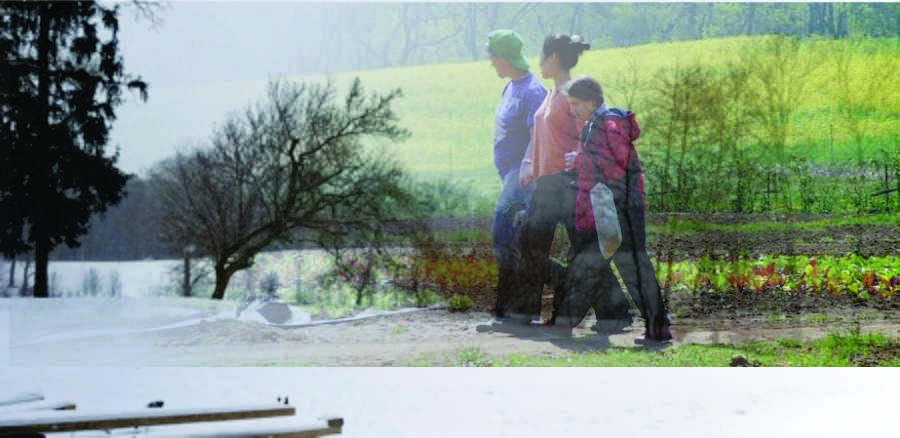
On Tuesday April 23, 2018, The Washington Post Health and Science section led with an intriguing story about a mixed ability community in Russia called Svetlana Village. I read this story over breakfast with great interest, since it laid out exactly the sort of interactive community we envisioned for Common Ground. I learned that this was just one of about 100 such communities worldwide that are part of the Camphill Movement. Hours later (and still in my jammies) I was devouring everything the internet had to offer about the Camphill Movement and the communities currently in operation in the US and England, where I would be for about a month later that year.
I tried for months to get in contact with some of the UK communities to see if I could visit and talk with them about our Common Ground project. I thought it would be beneficial to get their take on the idea of an ability-inclusive park that created wonderful events and educational opportunities to the general public. I heard nothing back. Not a text, email or a return phone call saying, “Sorry, but not interested.” Just crickets. This seemed odd to me but it was later explained that in some countries, visitors can just be gawkers who upset the apple cart of the resident’s lives and are therefore understandably unwelcome.
Upon my return, I mentioned my frustration to Tom Rumora, the Director of Spotsylvania County Department of Economic Development and Tourism. Tom is amazing. Within a day, he had made contact with the Camphill group in Pennsylvania and introduced me to the Regional Coordinator, Erin Byrne. When I explained our park concept and special needs mission to Erin, she immediately invited us up to visit the 3 communities local to her. Located just outside Philadelphia, these are the closest to us here in Virginia. There are others in the Northeast, Canada, Louisiana and California. (https://www.camphill.org/)

On February 1, 2019 3 of the PEA team had the pleasure of doing just that. What follows is our attempt to convey the truly awesome nature of the Camphill Movement that we experienced that day. We returned convinced that not only was our vision for Common Ground’s inclusivity and empowerment mission spot on but that it can succeed in Virginia with the same kind of a close, supportive community we found in Pennsylvania. (http://www.camphillkimberton.org/)
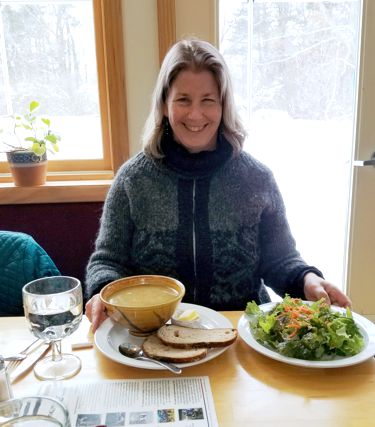
We met our guide, Erin at the Kimberton Hills community, a massive farm/estate up on a hill. Erin is the Regional Coordinator for the Camphill Association of North America with whom I had been corresponding. It was about 16 degrees out and snowing when we pulled up to an enormous, old stone house via a circular driveway that led right up to the front door. Erin met us at the door and ushered us into what had been the library and is now the office of Felicity Jeans, the Community Coordinator and Executive Director. Felicity is a quite force of nature at Kimberton. As she guided us around the campus, she was gently spinning yarn using a drop spindle and a cache of roving stashed in her pocket. Felicity and Erin explained that the Kimberton Community started in that the massive stone house and the hundreds of acres it looks out over were actually donated to the community, lock, stock and barrel.

We had shared the Common Ground plan with Erin and Felicity prior to our arrival. During our sit down in Felicity’s office they made it clear that while the system works, and works well ”it does not happen by itself but with the efforts of a dedicated community of people, time and ‘grace’ amazing things can happen.”
Philosophy:
Basically, the Camphill Movement is an initiative for social change based on the principles of anthroposophy, a word coined by Rudolf Steiner early in the 20th C for his philosophy that combines faith-based thought with

Karl König and student
natural science. And THAT is about as deep as I’m going to get with this here. If you’re really interested, there’s lots of information on the web. Suffice it to say that these principles have been applied to education, architecture, the arts, finance, medicine, agriculture and, apropos to this blog, special needs education and services.
The idea of anthroposophy was picked up by an Austrian pediatrician, Karl König and employed in his creation of the first Camphill community as a school in 1939 near Aberdeen, Scotland. König proposed that every human possessed a healthy inner personality, independent of their physical characteristics, including developmental or mental disability. He felt that the role of the school was to recognize, nurture and educate this essential self and that it was particularly important for children with intellectual development challenges.
Residents:
One of the first things we noticed on our visit was the terminology used. Let’s face it, we all dance around what to call people with intellectual and/or physical disabilities. At Camphill Kimberton, there were ‘Friends’ and there were ‘Coworkers’. Everyone was a productive and contributing member of the community in which they lived and worked. And everyone was respected for the person they are. At no time was anyone referred to as ‘disabled’ or ‘handicapped’.

Executive Director, Felicity Jeans (5th from L) with her friends and coworkers
Not every coworker lives on site and, at Beaver Farm, not all friends are residents. Beaver Farm is a transitional community where young people still under the oversight of the state board of education can come as day students. As in Virginia, Pennsylvania will try to find educational resources for special needs students until they reach the age of 21. Not all school systems are able to meet this requirement, especially in the more rural areas. At Beaver Farm, there are both day students and residential students, although they have noticed that residential students experience greater growth, probably due to the consistency of a total immersion program.
We met quite a few coworkers who are there on a one to two year internship of sorts, although not necessarily university–sponsored. There were young men and women from Columbia, the Philippines, Austria, Korea, Israel and more. They were preparing lunch salads with friends, working side by side in the bakery, overseeing the wood shop and pottery studio. These workers receive room and board along with a small stipend during their time in a community. In some cases where there is a university connection, coworkers can obtain their Special Needs Teaching certification through this placement. For a while, AmeriCorps volunteers also provided coworkers. A number of the older adult coworkers came for a short time but stayed after when they realized this job had become home. One young man had been brought up in a community where his parents worked and is now manages the woodshop at Kimberton.
Facilities:
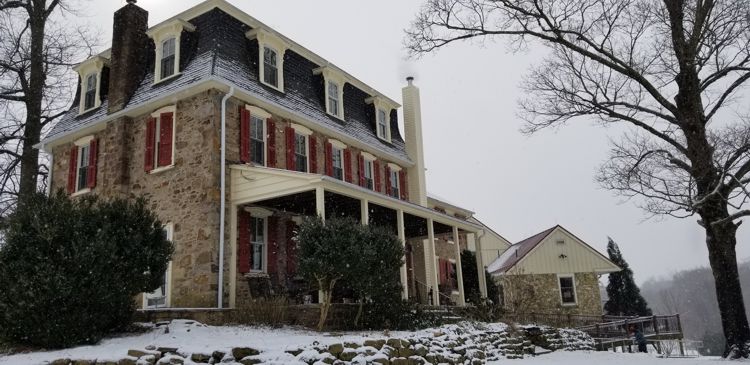
Both Kimberton and Beaver Farm are campus-like communities with a combination of public and private areas. Along with residence homes, barns, workshops and gardens here are comfortable places for the entire community to gather together for relaxation and a sort of ‘family time’. These gatherings are important to develop and maintain the cohesiveness of the community. We also saw health and therapy building and a special residence for senior friends and another for those with mobility issues. The original facility was made up of a large estate home, dairy barn and a two-story art studio that has since been split. The top was removed and made into a tiny apartment for a coworker while the art studio was expanded and became a lovely theater/chapel/meeting room. It is only a mile or so from Beaver Farm as the crow flies but there’s a steep hill and rushing creek between them so driving is the best option. Recently, another large home with significant land around it has been purchased which is between the two existing communities, its use to be determined.
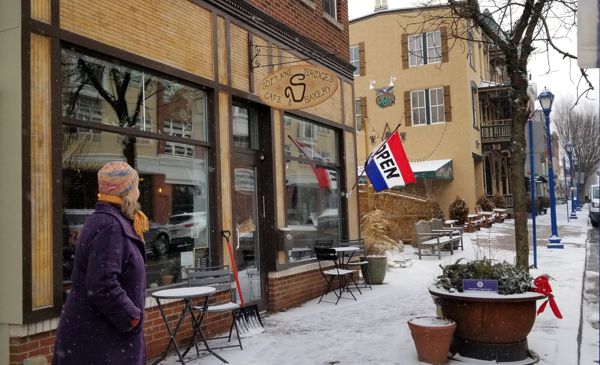
The Soltane community operates a 5 businesses within downtown Phoenixville, Pennsylvania. We had a wonderful cup of hot chocolate at the Soltane Cafe that also sported a wide selection of fresh-baked goodies. Down the street is Entwine, a boutique selling the handmade goods from the communities.

Further down is an art studio/gallery with a pottery studio in the basement where classes are offered. We did not see the Community Kitchen operation but heard about it and hope to visit on our next trip.
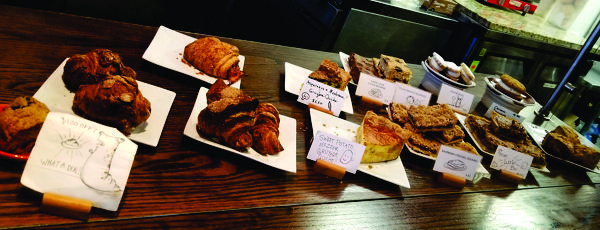
At Kimberton Hills, they were lucky to have a woman architect who embraced their philosophy and created lovely buildings with a combined sense of whimsy and purpose. Not every angle is right, not every window is rectangle. There are odd angles – not a lot, just enough – and plenty of natural light. The structures are colorful, bright and decorated in a way that made me think of the family refrigerator door – that microcosm of life experiences under little magnets we all have. The residents live in homes of 6 to 8 plus some coworkers. Residence groups of 10 or more are avoided. For example, at Beaver Farm, a larger residence, almost a dormitory, was constructed to hold more resident friends but by including more people in a more institutional-like setting, they might have gained efficiency but they lost the warmth and community feel. They lost some of that Zen I spoke about in the beginning. This has been changed into a combination building and life is back in balance.
Thanks for reading. Next time I’ll talk about the activities and sustainable nature of these communities and how the Camphill Movement model would mesh with the Common Ground mission. Certainly our proposed facilities and layout would be ideal for this kind of inclusive community while creating a wonderful park for everyone to enjoy.

Leave A Comment